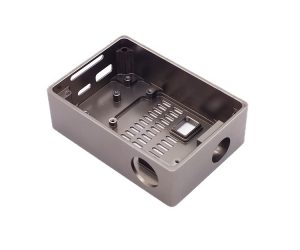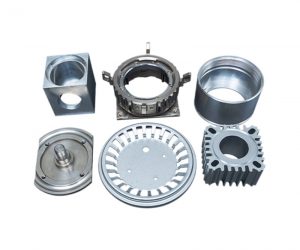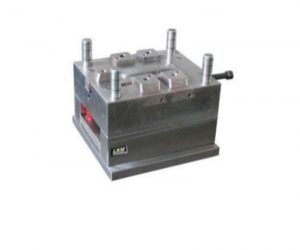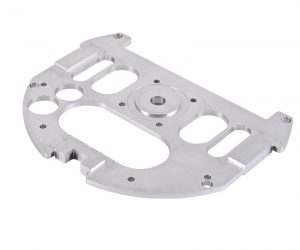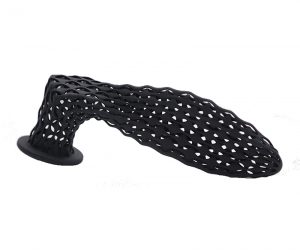For the intrepid entrepreneur eyeing the lucrative yet treacherous landscape of high-volume plastic part production, injection molding presents itself as a double-edged sword: a pathway to substantial profits, but fraught with peril for the unprepared. This isn't simply a matter of melting plastic and pouring it into a mold; it's a complex interplay of material science, precision engineering, and shrewd business acumen, demanding a level of foresight that separates the titans from the also-rans.
Forget the simplistic notion of "inject and forget." The reality is a chaotic ballet of variables. The selection of injection molding machines, a decision laden with financial implications, dictates not only production capacity but also the very tolerances achievable. A miscalculation here can lead to catastrophic waste, rendering even the most meticulously designed mold useless. The choice between new and used machinery, a seemingly straightforward cost-benefit analysis, morphs into a labyrinthine consideration of maintenance, downtime, and the hidden costs of obsolescence.
Material selection transcends mere cost-effectiveness. The subtle nuances of polyethylene, polypropylene, polystyrene, ABS, and the myriad other resins, each with its own temperamental properties and processing quirks, demand an intimate understanding of polymer chemistry. A seemingly insignificant variation in material composition can lead to catastrophic mold failures, jeopardizing the entire production run and potentially crippling the nascent enterprise.
The factory floor itself becomes a high-pressure environment where safety protocols aren't mere suggestions but life-or-death mandates. The molten plastic, the high-pressure hydraulics, the intricate machinery—each element presents a potential hazard that demands rigorous adherence to safety regulations and a culture of unwavering vigilance. A single lapse in safety can result in devastating consequences, far exceeding the financial losses.
Efficient production isn't merely about speed; it's about optimization. The intricate dance of mold design, material preparation, injection parameters, and cooling cycles demands a level of precision bordering on artistry. Statistical process control (SPC) becomes less a suggestion and more a necessity, a constant vigil against the insidious creep of defects that can unravel even the most meticulously planned operation.
Beyond the manufacturing floor lies the battlefield of business strategy. Financial modeling, marketing prowess, and the cultivation of enduring client relationships become as crucial as the technical aspects of production. The ability to navigate the complexities of supply chain management, anticipate market fluctuations, and maintain a competitive edge in a fiercely competitive landscape will ultimately determine success or failure.
Networking, far from being a mere formality, becomes a lifeline. The exchange of knowledge, the access to mentorship, and the forging of strategic alliances within the industry are essential for navigating the unpredictable currents of this demanding market.
In conclusion, embarking on the creation of an injection molding factory is not for the faint of heart. It demands a unique blend of technical expertise, business acumen, and an almost reckless willingness to embrace uncertainty. Success hinges on a meticulous understanding of the intricate interplay of these factors, and a relentless pursuit of perfection in a world where imperfection is the norm. The rewards are substantial, but the risks are equally significant. Only the truly audacious need apply.
What is injection molding and how does it work?
Injection molding, you see, it's like this clever way of making plastic bits and bobs. You got a special tool, a mold, that's either metal or aluminum, shaped just like the thing you want to make. This mold gets hooked up to a machine that heats up plastic pellets until they turn into liquid. Then, whoosh! That melted plastic is shot into the mold at super high pressure, filling every nook and cranny.
Once inside, the plastic cools down and hardens, becoming the actual part we need. After that, the mold opens up, the finished piece pops out, and guess what? The whole thing starts all over again. It's like magic, but for manufacturing!
Now, why do we love injection molding so much? Well, it's perfect for churning out loads of identical plastic bits really fast and cheaply. Each piece comes out exactly the same as the next one because they're all born from that one mold. Plus, this method can whip up shapes and details that would be a nightmare to try with other ways of making stuff. So, yeah, injection molding is pretty awesome when it comes to mass-making things.
What are the materials and finishes used in injection molding?
Injection molding can use a variety of thermoplastic polymers, which are plastics that can be melted and reshaped multiple times. Some of the most common materials used in injection molding are:
- ABS: A strong and durable material with good impact resistance and surface finish. It can be colored or filled with other additives.
- Polypropylene: A flexible and lightweight material with good chemical resistance and low friction. It can be transparent or opaque.
- Polycarbonate: A clear and tough material with high impact strength and heat resistance. It can be blended with other materials to improve its properties.
- Nylon: A strong and wear-resistant material with good thermal stability and low moisture absorption. It can be reinforced with glass fibers or other fillers.
- PVC: A rigid and inexpensive material with good electrical insulation and flame retardancy. It can be softened with plasticizers or blended with other materials.
Injection molding can also apply various finishes to the plastic parts, such as:
- Painting: Applying a coat of paint to enhance the appearance or functionality of the part.
- Plating: Applying a thin layer of metal to improve the corrosion resistance or conductivity of the part.
- Texturing: Creating a rough or patterned surface on the part to improve its grip or aesthetics.
- Polishing: Smoothing or shining the surface of the part to improve its clarity or gloss.
How to design for injection molding?
Designing for injection molding requires some considerations to ensure that the parts can be manufactured efficiently and effectively. Some of the main design tips for injection molding are:
- Minimize wall thickness: Reducing the wall thickness of the part can save material, reduce cycle time, and improve cooling efficiency. However, too thin walls can cause warping, sinking, or cracking issues. The optimal wall thickness depends on the material, geometry, and function of the part.
- Avoid undercuts: Undercuts are features that prevent the part from being ejected from the mold easily, such as holes, slots, or hooks. Undercuts require additional mold components or mechanisms that increase the complexity and cost of the mold. Undercuts should be avoided or minimized whenever possible, or replaced with alternative designs such as snap-fits or inserts.
- Add draft angles: Draft angles are slight slopes on the walls of the part that facilitate its ejection from the mold. Draft angles prevent friction and damage between the part and the mold during ejection. Draft angles should be applied to all vertical walls of the part, typically ranging from 1° to 3° depending on the material, finish, and depth of the wall.
What are the benefits and applications of injection molding?
Injection molding is a manufacturing process that produces plastic parts by injecting molten material into a mold. The benefits of injection molding include high production speed, low labor costs, high accuracy, and minimal waste. Injection molding can be used to create complex and intricate shapes that would be difficult or impossible to achieve with other methods. Some of the applications of injection molding are:
- Medical devices: Injection molding can produce sterile and disposable components for medical equipment, such as syringes, catheters, implants, and surgical instruments.
- Automotive parts: Injection molding can create durable and lightweight parts for vehicles, such as bumpers, dashboards, door handles, and engine components.
- Consumer products: Injection molding can create a variety of products for everyday use, such as toys, bottles, containers, utensils, and electronics.
- Industrial components: Injection molding can produce parts that can withstand high temperatures, pressures, and corrosive environments, such as valves, pipes, fittings, and gears.
Where to find injection molding plastic factories online?
If you are looking for injection molding plastic factories online, you may want to consider some factors before choosing a supplier. Injection molding is a process that involves melting plastic pellets and injecting them into a mold to create a desired shape. The quality of the final product depends on the type of plastic, the design of the mold, and the skill of the operator. Some of the factors that you may want to consider when looking for injection molding plastic factories online are:
- The location of the factory: Depending on your needs, you may want to find a factory that is close to your market or your raw materials. This can help you save on shipping costs and reduce the environmental impact of transportation. You may also want to check the local regulations and standards that apply to the factory and its products.
- The reputation of the factory: You may want to do some research on the factory's history, customer reviews, certifications, and awards. This can help you assess the quality and reliability of the factory and its products. You may also want to contact some of their previous or current clients and ask for their feedback.
- The capacity and capability of the factory: You may want to find out how many machines and workers the factory has, and what types of plastic and molds they can handle. This can help you determine if they can meet your production volume and specifications. You may also want to ask for samples or prototypes of their products to evaluate their quality and suitability for your needs.
- The price and terms of the factory: You may want to compare the prices and terms of different factories and negotiate for the best deal. You may want to consider factors such as minimum order quantity, lead time, payment methods, warranty, and after-sales service. You may also want to ask for a quotation or an invoice that clearly states all the costs and conditions involved in the transaction.
Finding injection molding plastic factories online can be a challenging task, but with some research and planning, you can find a suitable supplier for your needs. You may want to use online platforms such as Alibaba, or Made-in-China that connect buyers and sellers of industrial products. You may also want to consult with experts or professionals in the field who can offer you advice or recommendations.
